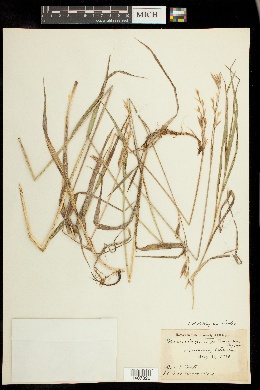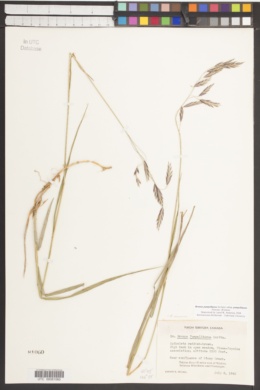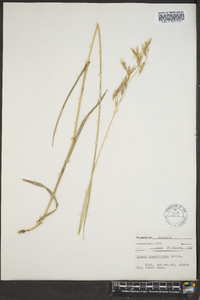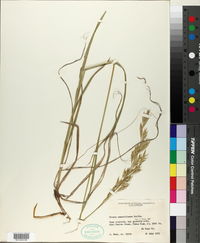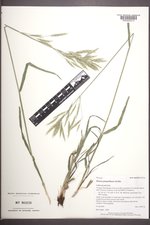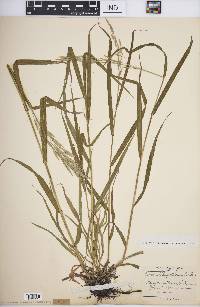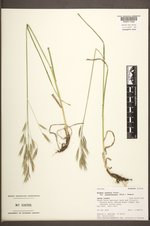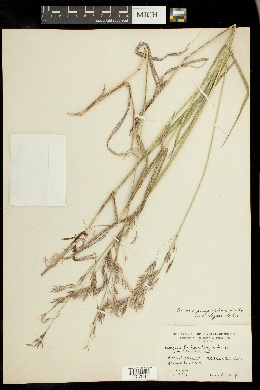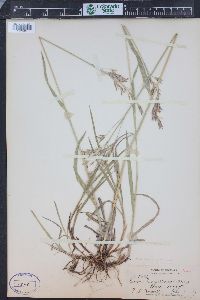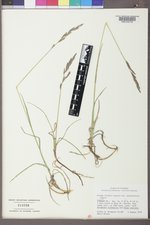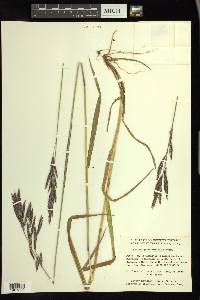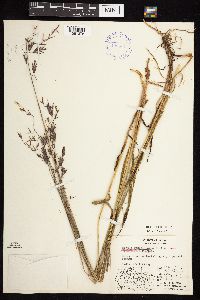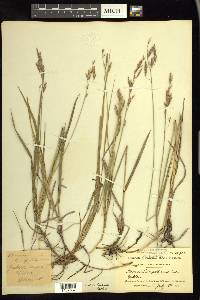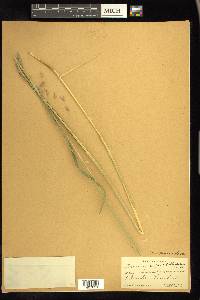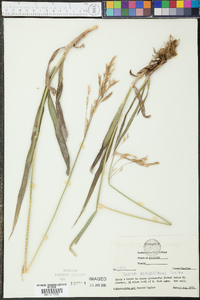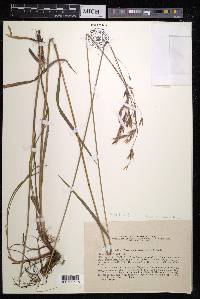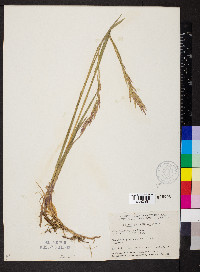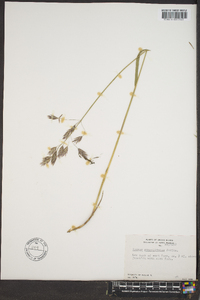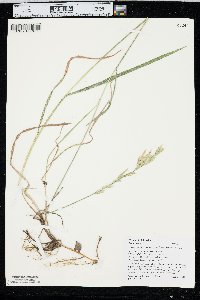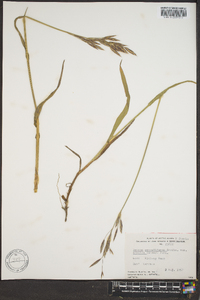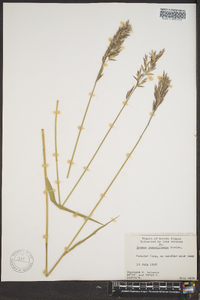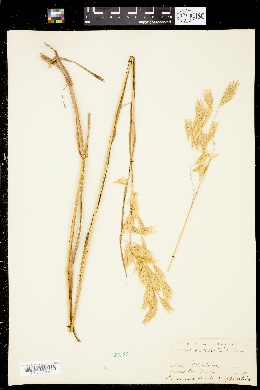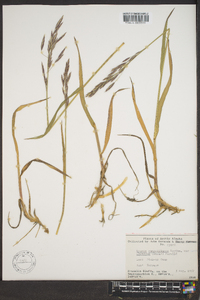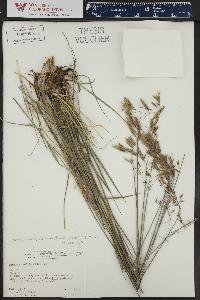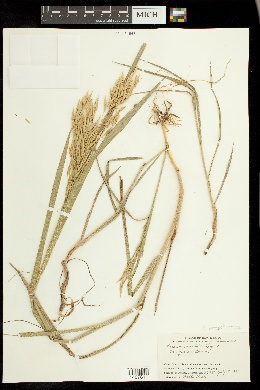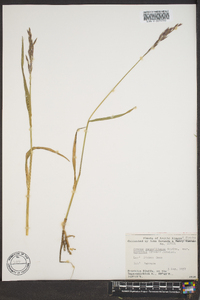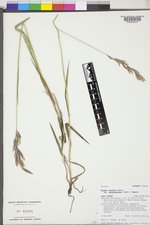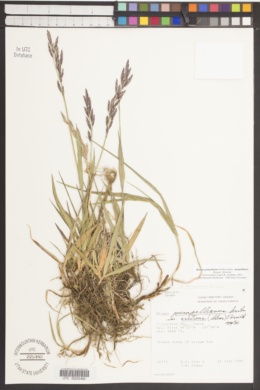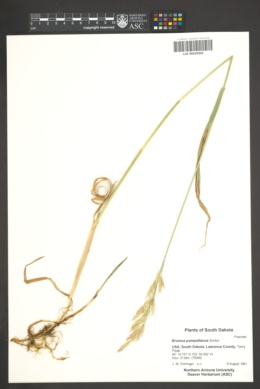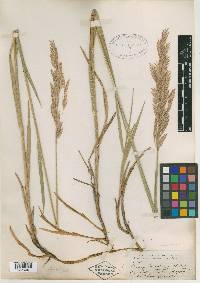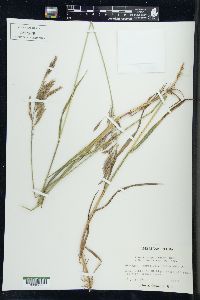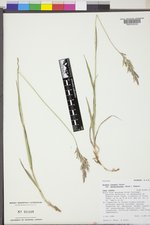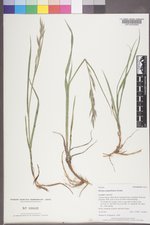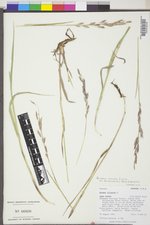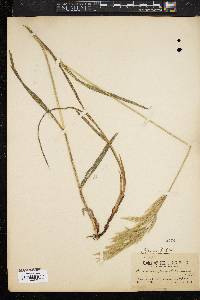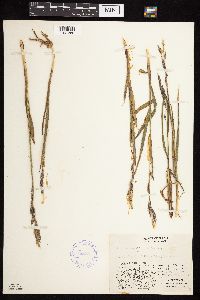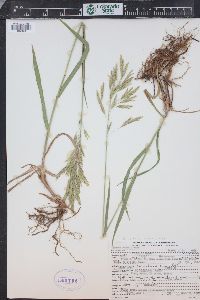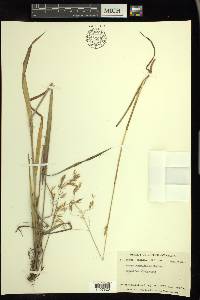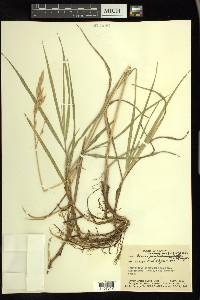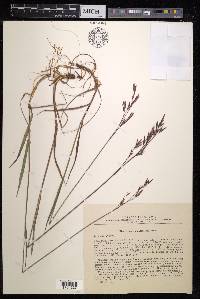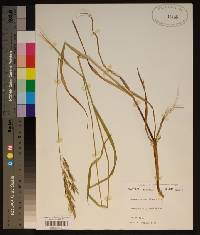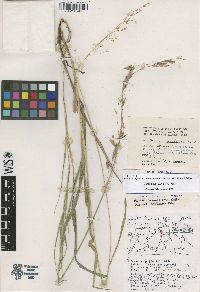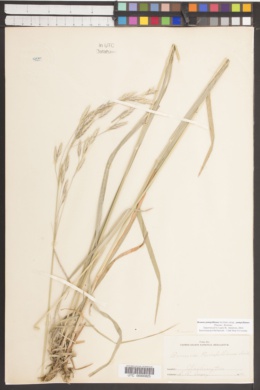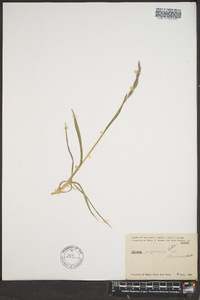Bromus pumpellianus
|
|
|
|
Family: Poaceae
Arctic Brome
[Bromopsis inermis var. pumpelliana (Scribn.) C.L. Hitchc., moreBromopsis korotkiji (Drobow) Holub, Bromus arcticus , Bromus inermis var. arcticus , Bromus inermis var. pumpellianus (Scribn.) C.L. Hitchc., Bromus occidentalis , Bromus purgans var. purpurascens , Zerna pumpelliana (Scribn.) Tzvelev] |
Plants perennial; usually rhizomatous, rhizomes short to long-creeping, sometimes cespitose. Culms 50-135 cm, erect or ascending, sometimes geniculate, usually single or a few together, sometimes clumped; nodes 2-7, pubescent or glabrous; internodes glabrous or pubescent. Sheaths pilose, villous, or glabrous; auricles sometimes present on the lower leaves; ligules to 4 mm, glabrous, truncate or obtuse, erose; blades 7-30 cm long, 2.5-8.5(9) mm wide, flat, pubescent or glabrous on both surfaces, sometimes only the adaxial surface pubescent. Panicles 10-24 cm, open or contracted, erect or nodding; branches erect to spreading. Spikelets 16-32(45) mm, elliptic to lanceolate, terete to moderately laterally compressed, sometimes purplish, with 4-14 florets. Glumes glabrous or hairy; lower glumes (4)5-10 mm, 1(3)-veined; upper glumes (5)7.5-13 mm, 3-veined; lemmas 9-16 mm, lanceolate, rounded over the midvein, sparsely to densely hairy throughout, or on the margins and lower portion of the back, or along the marginal veins and keel, apices subulate to acute, entire or slightly emarginate, lobes shorter than 1 mm; awns usually present, sometimes absent, to 7.5 mm, straight, arising less than 1.5 mm below the lemma apices; anthers 3.5-7 mm. 2n = 28, 56. The range of Bromus pumpellianus extends from Asia to North America, where it includes Alaska, the western half of Canada, the western United States as far south as New Mexico, and a few other locations eastward. It has been treated as a subspecies of B. inermis. It differs from that species primarily in its tendency to have pubescent lemmas, nodes, and leaf blades. Two subspecies that differ in morphology and distribution are described below. Both strongly resemble the recently introduced B. riparius, differing in the case of B. pumpellianus subsp. pumpellianus-in having longer rhizomes, or, in the case of B. pumpellianus subsp. dicksonii, in having a more restricted distribution. It is possible that the description and distribution of B. pumpellianus may be based in part on misidentification of B. riparius, as many taxonomists may have been unaware of the introduction of the latter species to North America. Much like no. 3 [Bromus inermis Leyss.]; nodes long-hairy; sheaths glabrous or hairy; lvs 5-8 mm wide, hairy above, commonly glabrous beneath; auricles sometimes well developed; ligule 1-2.5 mm; infl 6-15 cm, narrow, with 1-4 ascending branches from a node; glumes glabrous; lemmas 5- or 7-veined, evidently hairy at least at the base and margins, the awn 1.5-4(-5) mm; 2n=42, 56. Native to w. U.S. and Can., disjunct in n. Mich. and s. Ont. Hybridizes readily with no. 3, and perhaps better called B. inermis ssp. pumpellianus (Scribn.) Wagnon, or var. purpurascens (Hook.) Wagnon. Gleason, Henry A. & Cronquist, Arthur J. 1991. Manual of vascular plants of northeastern United States and adjacent Canada. lxxv + 910 pp. ©The New York Botanical Garden. All rights reserved. Used by permission. |










